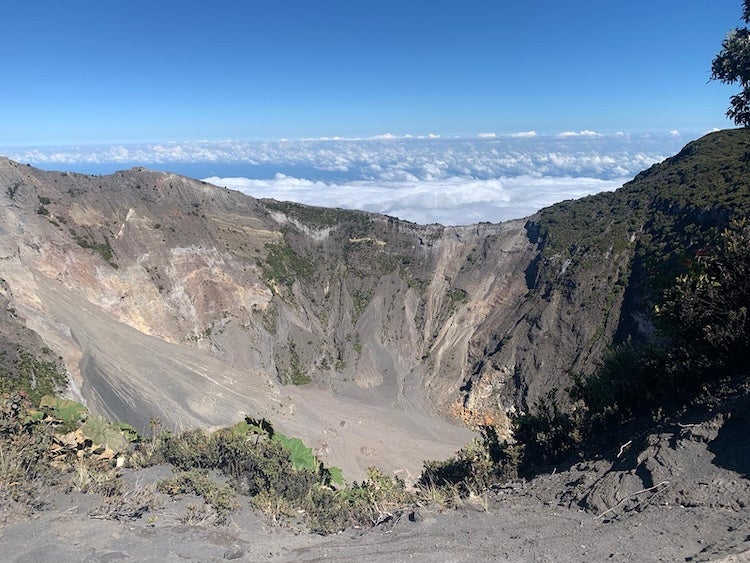RUGS spends their second day hiking to Irazú Volcano crater, and a look at some of Costa Rica's ancient cultures.
RUGS undergraduate participants are tasked with leading the research and discussion at each stop. Today's entries are authored by Adam Leff and Astra Burke (Irazú Volcano), with Ainsley Ganti (Guayabo National Monument).

Irazú Volcano
"The main activity of the day was visiting Irazú volcano, the highest volcano in Costa Rica. We drove to the summit, where there is a gift shop and cafe along with lots of information about the volcano itself. Although we had some car troubles, the views from the side of the mountain during the drive were breathtaking. Once at the top, we spent several hours walking around the caldera and peering into the principal crater."
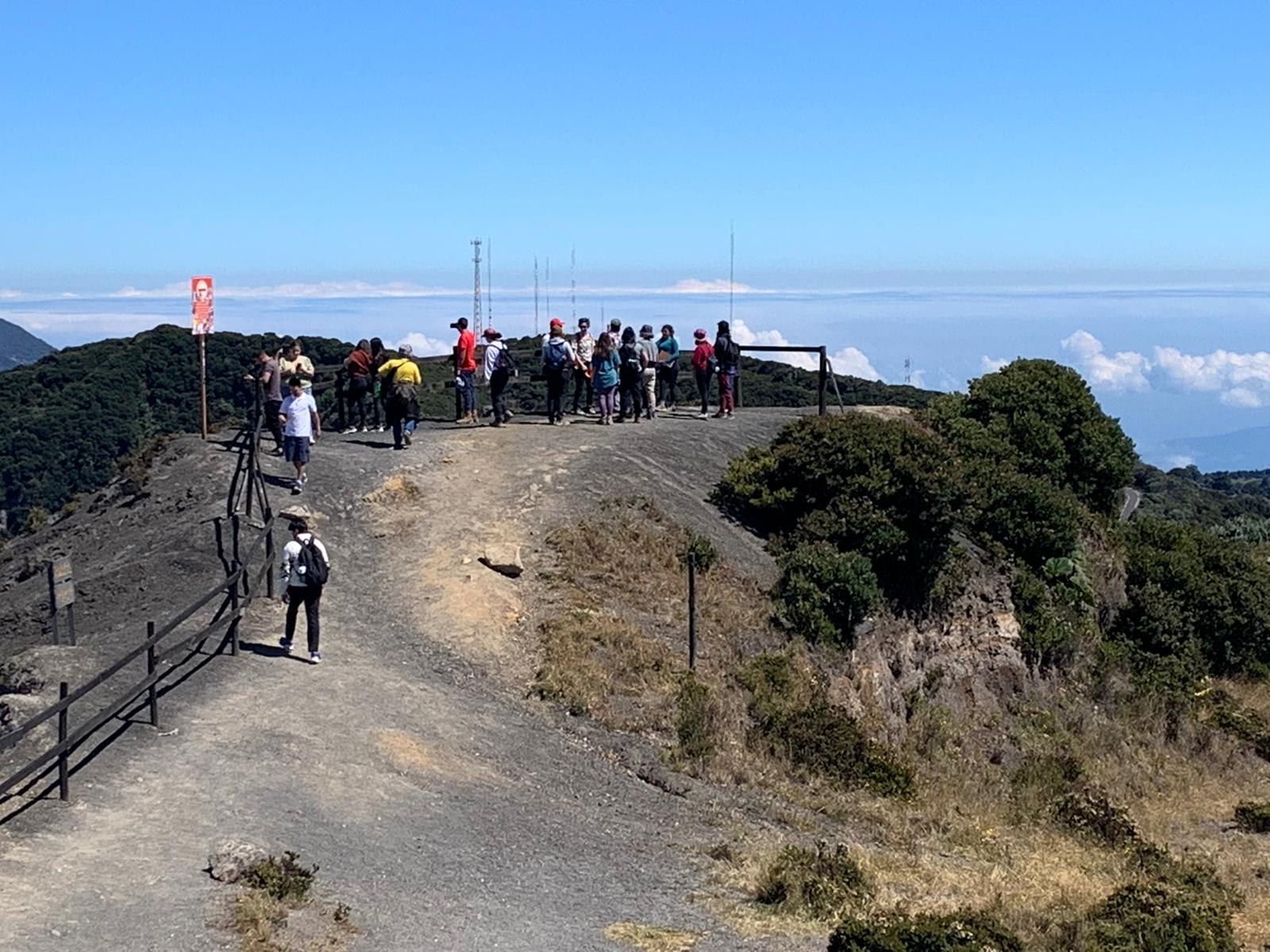
Irazú is an 854,000 year old complex stratovolcano, that has been active for the past 136,000 years. Over its lifetime, there have been periods of activity and inactivity, erupting 23 times since 1723, that year Diego de la Haya first recorded its eruption. It most recently erupted in 1994.
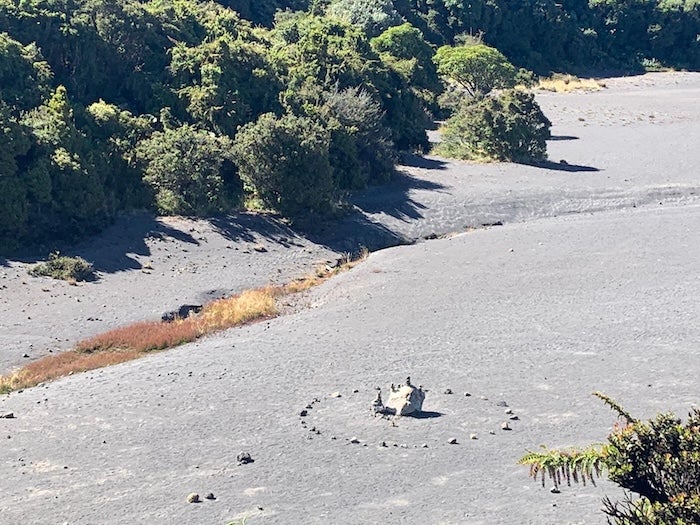
Irazú's eruptions are explosive, but generally rank low on the VEI scale—peaking around 2-3. (The Volcanic Explosivity Index (VEI) is a scale that describes the size of explosive volcanic eruptions based on magnitude and intensity. The numerical scale (from 0 to 8) is a logarithmic scale, and is generally analogous to the Richter and other magnitude scales for the size of earthquakes- USNPS.)
The largest eruption in recorded history was in 1963-1965. Those eruptions are characterized by lava flows, Strombolian explosions (less severe) and phreatomagmatic explosions (interacting with water). Overall it is a very interesting site and it was very rewarding to visit.
Irazu has a vast mineralogical landscape, with 48 minerals present due to complex hydrothermal interactions between water from the volcanic lake, igneous rocks, and sulfurous gases. Most rocks present are Basaltic and andesitic from previous eruptions. Pyroclastic sediment, such as ash and cinders, make up the soil of surrounding area and fill the crater basins.
Source:
https://www.mindat.org/loc-312431.html
https://volcano.si.edu/volcano.cfm?vn=345060
https://digitalcommons.usf.edu/cgi/viewcontent.cgi?article=2198&context=ijs
Guayabo National Monument
Guayabo National Monument was established in 1973. Previously, the land was a cattle ranch.

Our tour guide Elizabeth took us on a tour of the archeological trail in Guayabo National Monument. One of the first things we saw was a giant anthill. Th anthill was old, so no ants would be living there anymore. The ants who lived there were leaf cutter ants. We saw some elsewhere at the site transporting leaves. Only the women work, and the queen ant can live for 15-20 years. The ants can pose a problem from the archeological site (the aqueducts and roads) because the ants’ activities can cause a fungus to grow that can damage the rocks.
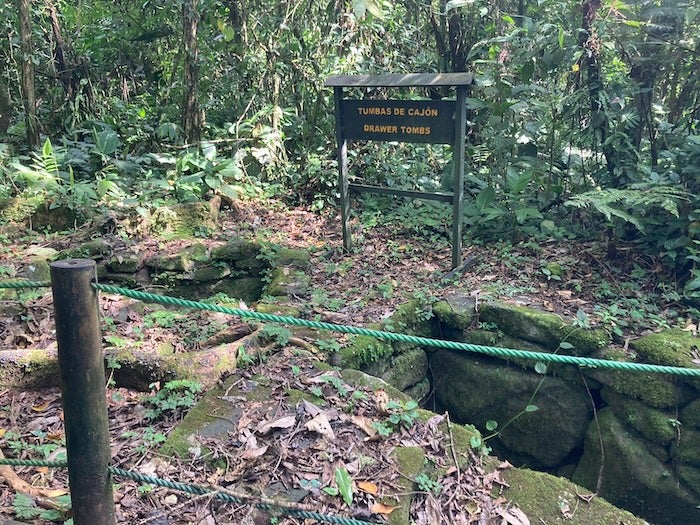
We also saw several tomb sites. Elizabeth shared with us that there are two ways that the people who lived in Guayabo buried their dead. If someone died of old age/natural causes, then they could directly be buried in the tomb, lying in a fetal position. However, if someone died from unnatural causes (e.g getting attacked by an animal), then their remains would be put in a basket and hung from a tree. The deceased would stay in the basket for around two months, as that gave their soul the opportunity to leave their body. People who died naturally already have their souls leaving their body, which is why this practice is not used for their burials. After the two months, the bones are retrieved from the basket and placed in a tomb. Tombs were generally found next to houses.
The main road into Guayabo is in great condition, which is remarkable given 1) how old it is and 2) the rocks aren’t held together by mortar; they are held together just by being compatible shapes. The aqueducts in Guayabo were even more impressive, with aqueducts that are still working perfectly after thousands of years. The source of water is a spring that is about 99% pure. The water doesn’t flow through the entire site, as the ranchers diverted the water for their farm when the site was a cattle ranch. Subsequently, ecosystems sprung up around the new path of water, so the water can’t be diverted back to the original path of aqueducts.
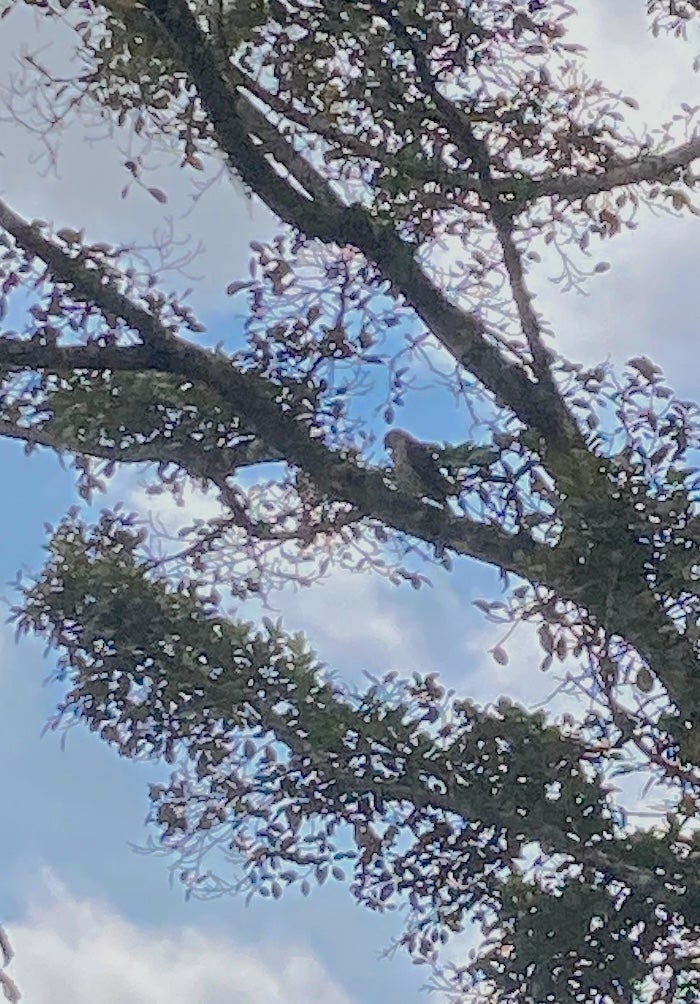
Some other wildlife we saw was a hawk, a toucan from a distance (I only saw the silhouette of the beak —not the colors), a oropendolas, and perhaps a squirrel.
For more information about the monument, its wildlife and resources, you can read Ainsley's detailed research notes HERE.

